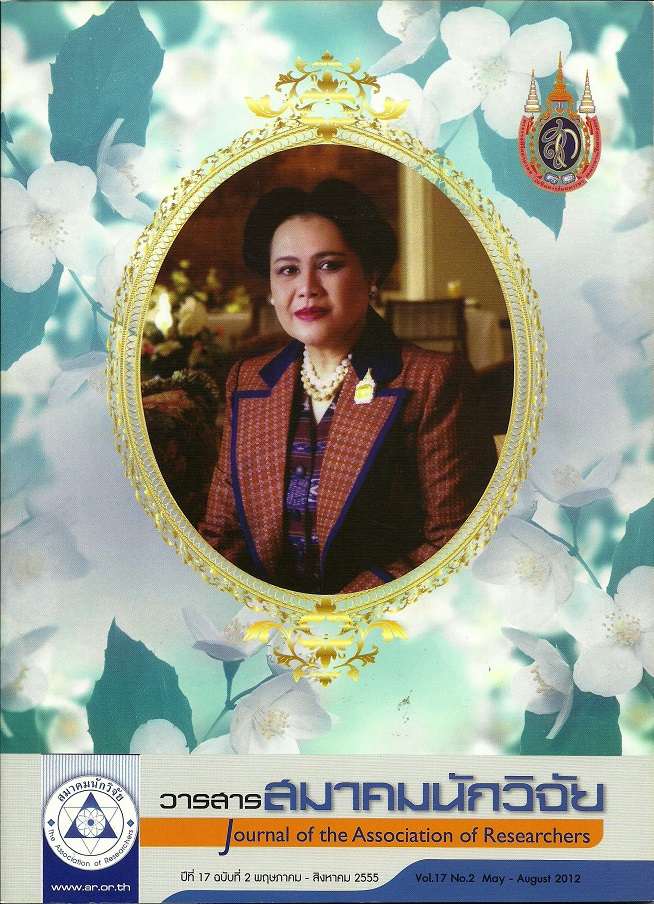THE EFFECTS OF BALLET DANCE TRAINING ON AUTISTIC CHILDREN'S BEHAVIOR
Main Article Content
Abstract
This research aimed to examine the effect of ballet dance training on autistic children's behavior. It was an experimental research with longitudinal time-series design. This training program was manipulated for the duration of 8 weeks: 3 days a week, and 30 minutes a day. The process of the program was carried out repeatedly with the following activities: warm-up, 3 sittings, 4 standing, 3 dancing around the room, and cool-down exercises. The sample was three autistic children aged 7-10 years who applied to a special class. Four aspects of behavior, namely psychological, physical, emotional, and social, were observed by trainers and guardians alternately week by week. Each aspect of behavior was plotting to form a multiple line chart with separate cases. The result of this study revealed that all of the three autistic children had better psychological, physical, emotional, and social behavior.
Article Details
บทความที่ปรากฏในวารสารนี้ เป็นความรับผิดชอบของผู้เขียน ซึ่งสมาคมนักวิจัยไม่จำเป็นต้องเห็นด้วยเสมอไป การนำเสนอผลงานวิจัยและบทความในวารสารนี้ไปเผยแพร่สามารถกระทำได้ โดยระบุแหล่งอ้างอิงจาก "วารสารสมาคมนักวิจัย"
References
กานดา โต๊ะถม. (2551). กิจกรรมเคลื่อนไหวสําหรับเด็กพิเศษระดับปฐมวัย. กรุงเทพฯ: ภาคการศึกษาพิเศษ คณะครุศาสตร์ มหาวิทยาลัยราชภัฏสวนดุสิต
กัลยาณี อินต๊ะสิน. (2550), การศึกษาทักษะทางสังคมของเด็กออทิสติกในระดับปฐมวัยจากการจัดกิจกรรม เคลื่อนไหวประกอบการเล่นเกม. ปริญญานิพนธ์ กศ.ม. (การศึกษาพิเศษ), กรุงเทพฯ: บัณฑิตวิทยาลัย มหาวิทยาลัยศรีนครินทรวิโรฒ
ผกา สัตยธรรม. (2545), สุขภาพจิตเด็ก พิมพ์ครั้งที่ 5. กรุงเทพฯ: จุฬาลงกรณ์มหาวิทยาลัย
ผดุง อารยะวิญญ. (2542). การศึกษาสําหรับเด็กที่มีความต้องการพิเศษ กรุงเทพฯ: แว่นแก้ว
พรสวรรค์ วสันต์, วันเพ็ญ บุญประกอบ, สุภาพร วัฒนวีรเดช, มหัทธนา กมลศิลป์, และกนกนก จารุวิสูตร. (2537). กลุ่ม อาการ โฆรโมโสม เอกซ์ เปราะ, วารสารสารศิริราช, 46, 218-224
พัชรา พุ่มพชาติ. (2535), อิทธิพลของเสียงดนตรีที่มีต่อพฤติกรรมก้าวร้าวของเด็กปฐมวัย, วารสารสํานักงานคณะ กรรมการวิจัยแห่งชาติ 2 (1), 31-34
เพ็ญแข ลิ้มศิลา. (2542). เรื่องน่ารู้เกี่ยวกับออทิสซึม. กรุงเทพฯ: กรมสุขภาพจิต กระทรวงสาธารณสุข
ภัทราภรณ์ ทุ่งปันคํา และคะนึงนิจ ไชยลังการณ์. (2546). อุปสรรค และ ความต้องการการช่วยเหลือในการดูแลเด็ก ออทิสติก. คณะพยาบาลศาสตร์ มหาวิทยาลัยเชียงใหม่
ราชบัณฑิตยสถาน. (2551). พจนานุกรมศัพท์ศึกษาศาสตร์ อักษร A-L กรุงเทพฯ: อรุณการพิมพ์
สร้อยสุดา วิทยากร. (2544). กรอบอ้างอิงการผสมผสานความรู้สึกของสมอง (The Sensory Integrative Frame of Reference) เชียงใหม่: คณะเทคนิคการแพทย์ มหาวิทยาลัยเชียงใหม่
สํานักงานพัฒนาการกีฬาและนันทนาการ. (2549). องค์ความรู้ด้านกีฬา นันทนาการ และวิทยาศาสตร์การกีฬา ค้นเมื่อ 7 มิถุนายน 2553, จาก http://www3.osrd.go.th/kmosrd.html
Bartlo, P., & Klein, P.J. (2011). Physical activity benefits and needs in adults with intellectual disabilities: Systematic review of the literature. American Journal on Intellectual and Developmental Disabilities, 116(3), 220-232.
Carmeli, E., Kessel, S., Coleman, R., & Ayalon, M. (2002). Effects of a treadmill walking program on muscle strength and balance in elderly people with Down syndrome. Journals of Gerontology. Series A, Biological Sciences and Medical Sciences, 57, M106-M110.
Carmeli, E., Zinger-Vaknin, T., Morad, M., & Merrick, J. (2005). Can physical training have an effect on well-being in adults with mild intellectual disability? Mechanisms of Ageing and Development, 126(2), 299-304.
Kansas ANJANLĪDu ln 17 aưur 2 wnuninu - donnay 2555 Carmeli E., Barak, S., Morad, M., & Kodesh, E. (2009). Physical exercises can reduce anxiety and improve the quality of life among adults with intellectual disabilities. International SportMed \Journal, 10(2), 77-85.
Glover, J. A., Bruning, R. H., & Filbeck, R. W. (1983). Educational psychology: Principles and Applications. Boston: Little, Brown, and Company.
Gochman, D. S. (1988). Health Behavior. New York: Plenum. Heller, T., Hsieh, K., & Rimmer, J. H. (2004). Attitudinal and psychosocial outcomes of a fitness and health education program on adults with Down syndrome. American Journal on Mental
Retardation, 109(2), 175-185.
Messent, P. R., Cooke, C. B. & Long, J. (1999). Primary and secondary barriers to physically active healthy lifestyles for adults with learning disabilities. Disability and Rehabilitation, 21(9), 409 419.
Pierangelo, R. (2003). The special educator's books of lists. 2nd ed. San Francisco: Jossey-Bass. Robertson, J., Emerson, E., Gregory, N., Hatto, C., Turnur, S., Kessissoglou, S., & Hallam, A. (2000). Lifestyle-related risk factors for poor health in residential settings for people with intellectual disabilities. Research in Developmental Disabilities, 21(6), 469-486.
Royal Academy of Dance. (2005). 2012 Summer programs for students & teachers. Retrieved August 28, 2005, from http://www.rad.org.uk
Temple, V. A., Frey, G. C., & Stanish, H. I. (2006). Physical activity of adults with mental retardation: Review and research needs. American Journal of Health Promotion, 21(1), 2-12.
The American Dance Therapy Association. (2001). Ballet and Autism. Retrieved December 20, 2004, from http://www.adta.org.


